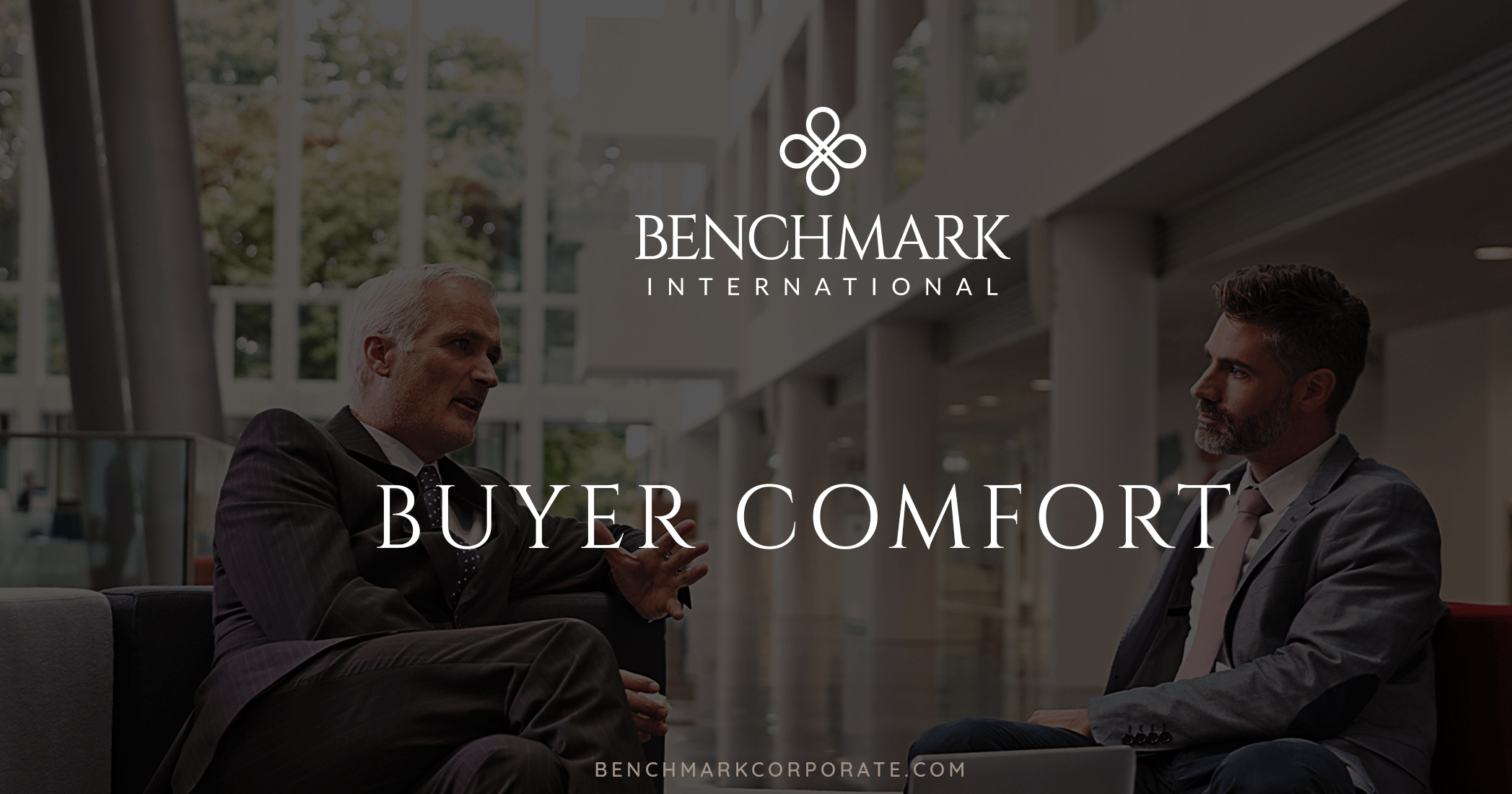We love to hear positive feedback from our clients, and we often share past client experiences with other parties. We showcase how Benchmark went above and beyond for sellers to get a deal across the line, or how value was added to a specific transaction. However, if you are considering hiring an M&A firm to represent you in a sale, isn’t it just as important to hear how buyers perceive the firm?
Benchmark International prides itself on a strong reputation within the lower middle market. Our company’s reputation spans vendors, clients, prospective clients, and buyers. Our team recently attended a conference where we had the opportunity to mingle with some of the most active investors within the lower middle market. The feedback we received from the buyers was highly encouraging and continues to reinforce our position as the best M&A sell-side representative in the industry.
So, what are buyers saying about Benchmark International?
- Benchmark International has the best deal flow within the market. This means that buyers recognize the quality opportunities that our firm represents. They also recognize us for having the most sectors and diversified listings in the space. When a buyer is looking for a unique opportunity or a quality business, they know to call Benchmark International.
- The Benchmark International team does a great job of following up. Our deal team always strives to close the loop on the buyer’s level of interest, gather market feedback, or push the buyer forward with the process. There is no other firm in the industry that provides clients with the deal expertise and team size that Benchmark International offers. This allows our team to pick up the phone and discuss your deal with a potential buyer. Buyers have often shared that, in other cases, once they receive a Confidential Information Memorandum, they rarely hear back from the sell-side representative. But our team chases buyers during every part of the process, including trying to get a decision on a buyer’s level of interest on a Teaser, trying to gather a buyer profile and Non-Disclosure Agreement, gathering feedback from the Confidential Information Memorandum, feedback after conference calls and meetings, and so on.
- The quality of the information in your Confidential Information Memorandum exceeds other firms. When our clients go through our Benchmark 360 process, our team puts on their buyer hats and asks the tough questions. We want to ensure that the business for sale is presented in the best light, that our team fully understands the offering, and that the seller has the opportunity to think through how their company is positioned for market. Putting on our buyer hats allows us to anticipate the questions and information a buyer will find important for their decision-making process.
- The Benchmark International team is always professional. We understand that emotions can sometimes get the best of people. It does not matter which side of the table you are on, when you want a deal to go forward and the deal has hit a hurdle, we know it can be frustrating. The good news is that our deal team has seen a lot of hurdles and usually has the tools and options to overcome any issues if all parties want to work through them. One thing the Benchmark International team prides itself on is always being professional, even during hard conversations. Oftentimes, we all want the same outcome—a successful deal completion—and Benchmark International needs to take the emotions out of the conversation and ensure that everyone keeps their eye on the ball in order to move the deal forward.
The lower middle market is a tough market. Our deal experts not only have the experience to hold the seller’s hand throughout the process, but also stand up to the largest buyers within the market. Our reputation provides our clients the opportunity to have their Teaser reviewed by buyers that many cannot get in front of, let alone have long-term relationships with that allows our phone calls to be answered. This is critically important because having an M&A firm with a strong buyer reputation will help a seller maximize results once they go to market.
READ MORE >> Benchmark International
Benchmark International  Benchmark International
Benchmark International 













